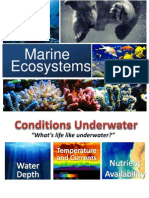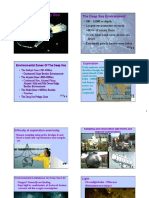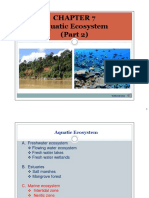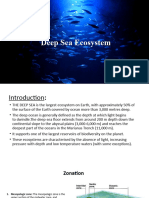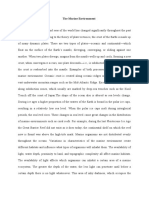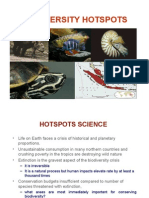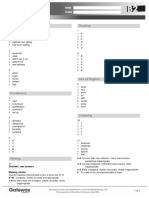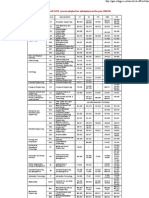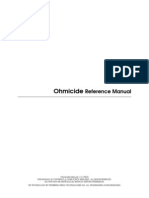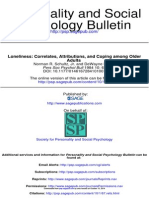0% found this document useful (1 vote)
380 views41 pagesSubtidal Lecture
The document summarizes key aspects of subtidal ecosystems:
1. Subtidal ecosystems are marine areas that are permanently submerged, never exposed during low tides. Abiotic factors like temperature, pressure, currents, and sediments influence subtidal areas.
2. Organisms in subtidal ecosystems include plankton, nekton, and benthos. Distribution is affected by depth and distance from land. Benthos are further divided into demersal, epifauna, and infauna groups.
3. Subtidal communities include soft-bottom areas with mud or sand substrates and hard-bottom areas like rocky shores or coral reefs. Both areas support diverse filter
Uploaded by
api-3827285Copyright
© Attribution Non-Commercial (BY-NC)
We take content rights seriously. If you suspect this is your content, claim it here.
Available Formats
Download as PPT, PDF, TXT or read online on Scribd
0% found this document useful (1 vote)
380 views41 pagesSubtidal Lecture
The document summarizes key aspects of subtidal ecosystems:
1. Subtidal ecosystems are marine areas that are permanently submerged, never exposed during low tides. Abiotic factors like temperature, pressure, currents, and sediments influence subtidal areas.
2. Organisms in subtidal ecosystems include plankton, nekton, and benthos. Distribution is affected by depth and distance from land. Benthos are further divided into demersal, epifauna, and infauna groups.
3. Subtidal communities include soft-bottom areas with mud or sand substrates and hard-bottom areas like rocky shores or coral reefs. Both areas support diverse filter
Uploaded by
api-3827285Copyright
© Attribution Non-Commercial (BY-NC)
We take content rights seriously. If you suspect this is your content, claim it here.
Available Formats
Download as PPT, PDF, TXT or read online on Scribd
/ 41



